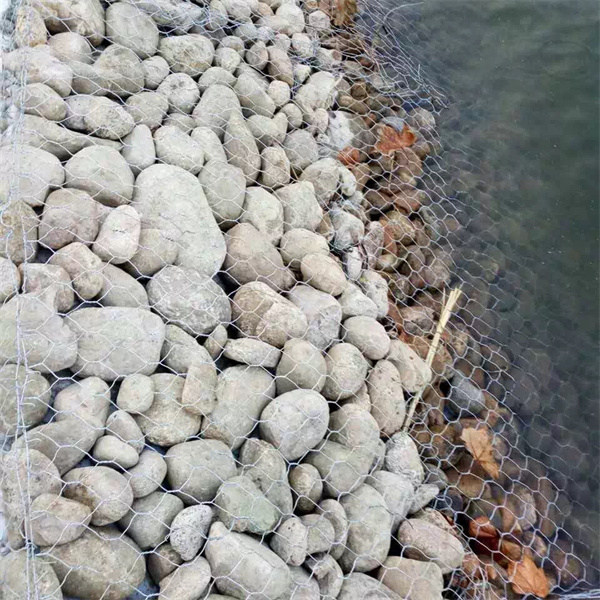Nov . 05, 2024 21:39 Back to list
gabion barrier
Gabion Barriers A Sustainable Solution for Erosion Control and Landscape Design
In recent years, the application of gabion barriers has gained significant attention in environmental management, civil engineering, and landscape design. Gabions, derived from the Italian word gabbione, meaning large cage, consist of wire mesh boxes filled with stones, rocks, or other materials. These structures serve multiple purposes, from controlling soil erosion to enhancing the aesthetic appeal of natural landscapes.
Understanding Gabion Barriers
Gabion barriers are structures made from wire mesh that are filled with locally sourced stones or rocks. The wire mesh acts as a cage, holding the stones in place and creating a sturdy barrier that can withstand immense pressure and environmental forces. These barriers can be constructed in various sizes and shapes, making them versatile for numerous applications. Their primary purpose is to stabilize slopes, prevent soil erosion, and manage water drainage in both rural and urban settings.
One of the foremost advantages of gabion barriers is their ability to blend seamlessly into the natural environment. Unlike traditional concrete structures, gabions promote natural habitat for local flora and fauna. Over time, vegetation can grow through the gaps in the stones, further enhancing the ecological value of the area. Moreover, gabion barriers can provide a natural aesthetic, often appearing as if they are an integral part of the landscape.
Applications and Benefits
Gabion barriers are extensively used in various applications, including
1. Erosion Control In areas prone to soil erosion, gabion barriers effectively reduce runoff and protect the integrity of slopes. They dissipate energy from flowing water, allowing sediment to settle and preventing the loss of topsoil.
2. Riverbank Stabilization Riverbanks are particularly vulnerable to erosion due to water currents. Gabion barriers can be placed along the banks to fortify them against flooding and shifting waters, which helps maintain the river's ecosystem.
gabion barrier

3. Noise Barriers In urban areas, gabion barriers can serve as effective noise barriers. The mass of the stones in the gabions absorbs sound, contributing to a quieter environment for residential and commercial spaces.
4. Aesthetic Structures Beyond functional purposes, gabion barriers can also be designed as decorative elements in landscaping. They can create retaining walls, garden beds, or seating areas, adding visual interest while serving practical functions.
5. Flood Management Gabion barriers can help manage stormwater runoff during heavy rains. By controlling water flow and redirecting excess water, they can mitigate the risk of flooding in susceptible areas.
Sustainability and Environmental Impact
In an era where sustainability is paramount, gabion barriers prove to be an eco-friendly alternative to traditional construction methods. They utilize natural materials that blend into the environment and often require less energy to produce compared to concrete or asphalt barriers. Additionally, gabions can be filled with recycled materials, further minimizing their environmental footprint.
Furthermore, the use of gabion barriers promotes biodiversity. As vegetation takes root in and around the gaps of the stones, the area becomes more hospitable for various species, thus supporting local ecosystems.
Conclusion
Gabion barriers offer a multifaceted solution to contemporary environmental and engineering challenges. Their capacity to control erosion, manage stormwater, and provide aesthetic value makes them an attractive option for landscape architects, civil engineers, and environmentalists alike. As we face increasing concerns about climate change and its impact on our landscapes, the adoption of sustainable practices like gabion barriers becomes critical. By integrating these structures into our infrastructure, we not only enhance the resilience of our environments but also contribute to the preservation of natural beauty and biodiversity. As awareness grows, it is likely that gabion barriers will continue to play an important role in shaping sustainable landscapes for future generations.
-
Visualizing Gabion 3D Integration in Urban Landscapes with Rendering
NewsJul.23,2025
-
The Design and Sustainability of Gabion Wire Mesh Panels
NewsJul.23,2025
-
The Acoustic Performance of Gabion Sound Barriers in Urban Environments
NewsJul.23,2025
-
Mastering the Installation of Galvanized Gabion Structures
NewsJul.23,2025
-
Gabion Boxes: Pioneering Sustainable Infrastructure Across the Globe
NewsJul.23,2025
-
Custom PVC Coated Gabion Boxes for Aesthetic Excellence
NewsJul.23,2025
-
Installation Tips for Gabion Wire Baskets in Erosion Control Projects
NewsJul.21,2025






